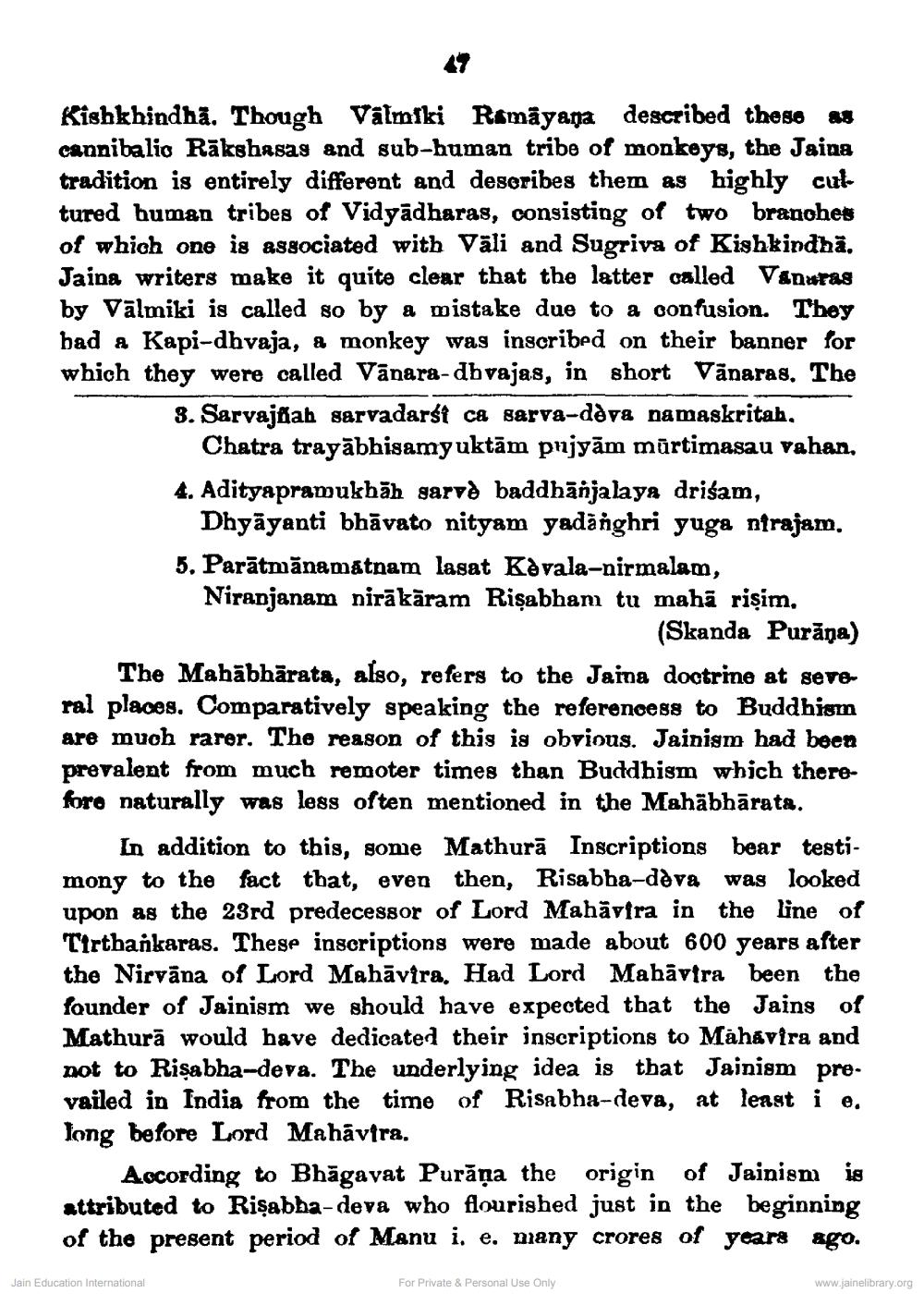________________
Kishkhindha. Though Valmiki Ramayana described these 48 cannibalio Rākshasas and sub-human tribe of monkeys, the Jaina tradition is entirely different and describes them as highly cul tured human tribes of Vidyādharas, consisting of two branches of which one is associated with Väli and Sugriva of Kishkindhā. Jaina writers make it quite clear that the latter called Vanuras by Vālmiki is called so by a mistake due to a confusion. They had a Kapi-dhvaja, a monkey was inscribed on their banner for which they were called Vānara-dbvajas, in short Vãnaras. The
3. Sarvajñab sarvadarst ca sarva-ddva namaskritah.
Chatra trayābhisamyuktām pnjyām mūrtimasau vahan, 4. Adityapramukhāh garve baddhanjalaya drišam,
Dhyāyanti bhāvato nityam yadănghri yuga nsrajam. 5. Parātmānamatnam lasat Kavala-nirmalam, Niranjanam nirākāram Rişabham tu mahā rişim,
(Skanda Purāņa) The Mahābhārata, also, refers to the Jaina doctrine at seve ral places. Comparatively speaking the referenoegs to Buddhism are much rarer. The reason of this is obvious. Jainism had been prevalent from much remoter times than Buddhism which thereforo naturally was less often mentioned in the Mahābhārata.
In addition to this, some Mathurā Inscriptions bear testimony to the fact that, even then, Risabha-deva was looked upon as the 23rd predecessor of Lord Mahavira in the line of Tirthankaras. These inscriptions were made about 600 years after the Nirvāna of Lord Mahāvīra. Had Lord Mahāvīra been the founder of Jainism we should have expected that the Jains of Mathurā would have dedicated their inscriptions to Mahavira and not to Rişabha-deva. The underlying idea is that Jainism prevailed in India from the time of Risabha-deva, at least i e. long before Lord Mahāvira.
According to Bhāgavat Purāņa the origin of Jainism is attributed to Rişabha-deva who flourished just in the beginning of the present period of Manu i, e. nany crores of years ago.
Jain Education International
For Private & Personal Use Only
www.jainelibrary.org




